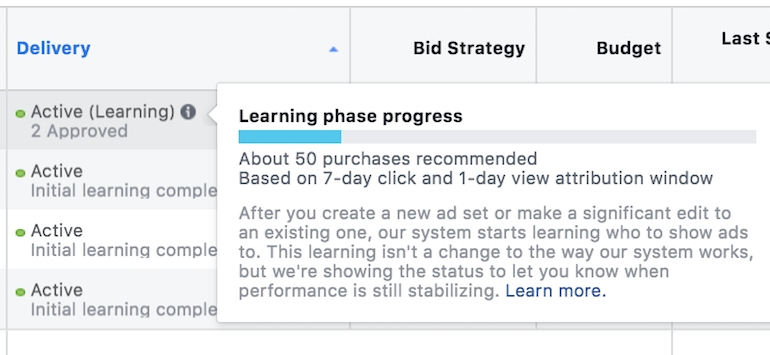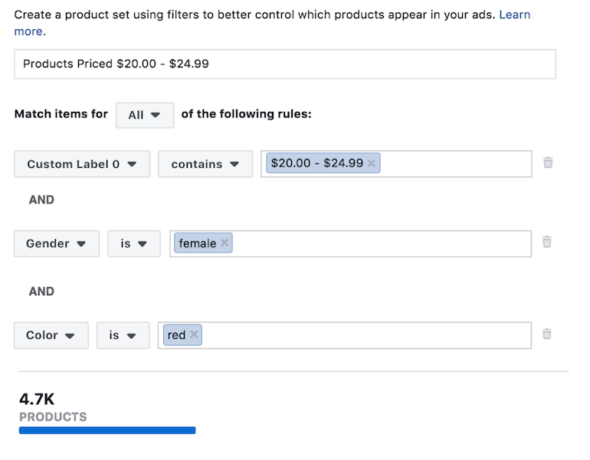[ad_1]
Being a retailer on Facebook in 2019 might feel a little cramped. Standing out among hundreds of businesses all gunning for a user’s attention can be frustrating, not to mention a money sink. As an advertiser, understanding the technical aspects of Facebook Ads can tremendously increase your ROI without having to completely change your overall strategy. Correctly approach these three to improve your Facebook retail ads.
The “Learning Phase”
The “Learning Phase” is a time period post-campaign launch where the Facebook algorithm is taking time learning to optimize towards your objective. 50 optimization events will have to occur during your conversion window to complete the learning phase.
While somewhat at the mercy of the algorithm, understanding the learning phase for your typical campaign launch can help you neutralize the negative effects. Larger fluctuations towards the beginning of a campaign launch will impact performance, and setting expectations for this is crucial. As you test more campaign launches of various budgets and audiences, you will learn the average time to surpass this conversion threshold.
Retailers whose audiences or budget might be too small to get close to the 50 conversion threshold, remain calm! Facebook is still going to take a period of time to learn about your campaigns, work to maximize the objective, and will eventually exit the learning phase. Making drastic changes to your campaigns within the first few days post-launch is only going to send them into more of a downward spiral. If you have launched a campaign and do need to make significant edits, I’ve found more success duplicating a campaign, changing what I need, and relaunching.
Custom Audiences
Whether it’s first-party data lists, website traffic, or engagement audiences, there are multiple considerations to make when utilizing this feature.
Keeping first-party data lists refreshed ensures the users in these audiences are receiving accurate and relevant advertising. A long sales cycle generally means you can get away with refreshing less often, but there are a lot of factors to consider, like when the email was captured, how the list is being used in targeting, and what the offer is. I use refreshing every month as a good rule of thumb and adjust accordingly.
Proper audience exclusions can help you avoid wasted spend. Few things on the customer’s end are more abrasive than receiving an ad for something you’ve just purchased. And few things are more idiotic on the advertiser’s end than spending money trying to get someone to give you money who has already given you money (obviously ignoring cross/up-selling). Having a rolling audience of converters as an exclusion on your campaigns can avoid this and please both parties.
Quick Tip: There is a setting hidden within your pixel settings to turn on automatic advanced matching. This is great for smaller advertisers who are wrestling with small remarketing pools.
Custom Product Sets
Product sets are the lifeblood of your catalog sales campaigns, and knowing the possibilities within the set creation tool can help drive better performance.
Advertisers have the ability to create custom product sets easily within the Facebook interface in the catalog section. You can layer different criteria on each other to create more granular product sets that better align with your creative or campaign structure. If you’re showing a video of a woman with a red T-Shirt on, it might make sense to show similar products alongside it.
Furthermore, if you have custom labels in your product feed there’s even more freedom here to get creative with your product sets. Adding a pricing or profitability tier into one of your custom labels is something I always begin with. This allows for more seamless campaign optimizations by having a clear view into which products can most affect the bottom line.
Wrapping Up
In conclusion, there is no cookie cutter solution for winning with Facebook Ads in the retail space. Taking time to understand how Facebook learns about your campaigns, how your different audiences perform, and capabilities with your product catalog can bring you one step further to crushing your goals and becoming the hero of your organization.
[ad_2]
Source link





Recent Comments